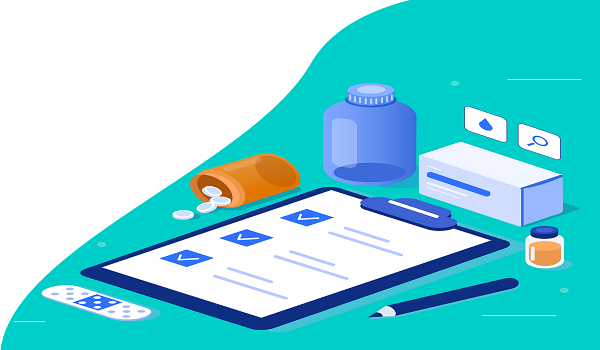Do pharmaceutical standards really represent an insurmountable challenge? Absolutely not! In reality, these regulations constitute your best ally for ensuring operational excellence. Every day, the pharmaceutical industry must comply with exceptional quality standards. These requirements protect the health of millions of patients worldwide. However, digitalization is now transforming this constraint into an opportunity. Thanks to innovative solutions like Picomto, you can optimize your quality processes. Thus, compliance becomes simpler and more efficient than before.

Key Takeaways regarding pharmaceutical standards:
- Pharmaceutical standards guarantee patient safety
- GMP, GLP and GCP govern the entire production chain
- FDA, EMA and ANSM control global compliance
- Digitalization revolutionizes quality management
- Picomto optimizes your compliance processes
1. What are pharmaceutical standards and why do they exist?
Let's start with the essentials. Pharmaceutical standards form a strict regulatory framework. They govern the pharmaceutical industry to guarantee safe and effective products.
1.1. Definition and Fundamental Objectives of Pharmaceutical Standards
At first glance, these rules seem complex and constraining. Yet their mission is crucial:
- Protect public health against drug-related risks.
- Ensure therapeutic efficacy of each treatment.
- Prevent dosage errors and cross-contamination in production.
- Harmonize practices on a global scale.
According to the WHO, more than 10% of medicines worldwide are of substandard quality. This alarming figure shows the importance of standards. Each regulation aims to reduce these gaps and strengthen quality.
1.2. Impact on Public Health and Patient Safety
Pharmaceutical standards have a direct impact on millions of lives. The Mediator or contaminated blood scandals highlighted the dangers of insufficient control.
Since then, authorities have:
- Strengthened traceability: each production step is documented and verifiable.
- Optimized recalls: more targeted and efficient in case of quality problems.
This rigor is essential. It strengthens public confidence and ensures treatment safety. Without it, the entire healthcare system wavers.
2. Who Controls and Establishes Global Pharmaceutical Standards?
To understand properly, let's explore the complex ecosystem of regulatory authorities. These organizations work together to harmonize standards and protect patients on a global scale.
2.1. International Reference Organizations
At the forefront, the ICH (International Council for Harmonisation) plays a key role. This organization:
- Coordinates regulations between Europe, the United States and Japan.
- Simplifies marketing authorization procedures.
- Enables laboratories to adopt global and coherent strategies.
In parallel, the WHO provides recommendations adapted to developing countries. Its guidelines:
- Help structure local regulatory systems.
- Promote access to quality medicines worldwide.
Moreover, this international collaboration accelerates therapeutic innovation. A medicine approved in one region can more quickly obtain authorization elsewhere. Patients benefit directly.
2.2. Regulatory Authorities by Geographic Zone
Each region has its own authorities.
- In the United States, the FDA (Food and Drug Administration) is the global reference. It controls every aspect of the pharmaceutical chain and influences global decisions.
- In Europe, the EMA (European Medicines Agency) centralizes medicine evaluation. It coordinates national agencies of the 27 member countries, enabling facilitated access to a market of 450 million inhabitants.
- In France, the ANSM (National Agency for the Safety of Medicines and Health Products) ensures rigorous control. It inspects production, distribution and pharmacovigilance.
According to official figures, ANSM conducts more than 400 inspections per year. These controls maintain high quality standards on our territory.
3. How to Overcome Pharmaceutical Standards Compliance Challenges?
Let's now examine the concrete obstacles encountered by professionals. These challenges may seem insurmountable. However, solutions exist to transform these constraints into competitive advantages.
3.1. Complexity of Pharmaceutical Document Management
Documentation is one of the greatest challenges. Each company manages thousands of critical documents:
- Procedures, operating modes, specifications.
- Documents constantly updated according to new regulations.
This complexity leads to:
- Time lost searching for the right version.
- Risks of using obsolete documents, causing non-conformities.
According to a recent study, 30% of quality deviations stem from documentation errors. These figures show the urgency of modernizing document management. Digital solutions provide concrete and efficient answers.
3.2. Continuous Training and Skills Development
Training is another major challenge.
- Regulations evolve constantly.
- Personnel turnover complicates knowledge transfer.
Traditional training, often theoretical, struggles to anchor good practices. Result: human errors persist.
Conversely, digital solutions transform learning:
- Interactive and personalized content.
- Progress adapted to each collaborator's needs and missions.
3.3. Preparation and Management of Regulatory Audits
Audits and inspections add enormous stress.
- They can occur at any time and concern all activities.
- A major non-conformity can compromise business continuity.
To prepare, companies must:
- Maintain constant readiness.
- Guarantee immediate accessibility of compliance documents and evidence.
However, paper systems slow this preparation. Finding a specific document can take hours. This inefficiency harms company credibility.
4. How Does Digitalization Revolutionize Pharmaceutical Compliance?
Let's now see how the digital revolution transforms the pharmaceutical industry. This transition offers unprecedented opportunities to combine efficiency and regulatory excellence.

4.1. Industry 4.0 and Digital Transformation of the Pharmaceutical Sector
Industry 4.0 redefines production standards. Technologies connect the entire value chain, strengthening:
- Process traceability.
- Reactivity to incidents.
For example:
- The Internet of Things (IoT) continuously monitors critical parameters. Sensors detect temperature or humidity deviations. Teams intervene before these anomalies affect quality.
- Artificial intelligence (AI) analyzes data in real time. Algorithms identify trends invisible to the human eye and predict failures before they occur.
4.2. Digitalized Operating Procedures: The Work Instruction Revolution
Procedure digitalization transforms operators' daily work:
- Tablets and smartphones replace paper procedures.
- Instructions display in real time, as interactive photos, videos or diagrams.
- This approach drastically reduces human errors.
Moreover, systems automatically record:
- Who did what, when and under what conditions.
- This data facilitates audit preparation.
4.3. Picomto: Your Partner for Intelligent Compliance
Picomto is the leader in digital compliance solutions:
- A SaaS platform that revolutionizes work instruction creation and distribution.
- An intuitive interface enabling rapid integration of visuals and diagrams.
Concrete advantages:
- Up to 80% time savings in procedure writing.
- Instant distribution of updates to all workstations.
- Elimination of risks linked to obsolete document use.
- Automatic traceability of field actions, providing compliance evidence for audits.
5. What Concrete Benefits Does Pharmaceutical Standards Digitalization Bring?
Let's conclude with the tangible gains offered by this transformation. Benefits go far beyond simple paper elimination. They directly improve companies' overall performance.
5.1. Drastic Reduction of Errors and Non-Conformities
Digitalization divides human errors by three thanks to:
- Visual and interactive operator guidance.
- Clear instructions eliminating ambiguities.
For example:
- At Haleon, Picomto use reduced quality deviations by 60%.
- This improvement stems from practice standardization and automated control.
Moreover, automatic alerts remind:
- Mandatory control points.
- Critical steps, thus reducing oversights.
5.2. Cost Optimization and Return on Investment
Return on investment (ROI) is rapid:
- Savings come from reducing non-conformities, withdrawals and recalls.
- On average, a pharmaceutical company saves €200,000 per year through process optimization and waste reduction.
- Initial investment is generally amortized in less than 18 months.
Team productivity increases:
- Less time lost searching for information.
- More focus on high-value-added tasks.
5.3. Improved Customer and Patient Satisfaction
These improvements directly impact:
- Product quality, strengthening customer and patient confidence.
- Brand reputation, opening new international markets.
Thus, digitalized companies gain:
- New market shares.
- Partners seeking reliability and innovation.
In Conclusion: Your Roadmap to Pharmaceutical Excellence
Ultimately, pharmaceutical standards constitute the essential foundation of our industry. They protect public health and guarantee our treatments' efficacy. However, their growing complexity requires a modern and digitalized approach.
Fortunately, solutions like Picomto transform these constraints into opportunities. Digitalization simplifies compliance while improving operational efficiency. This transformation benefits everyone: companies, professionals and patients.
FAQ
What are pharmaceutical quality standards?
Main standards include GMP, GLP, GCP, GDP and ISO 13485. They guarantee patient safety.
What is digitalization in the pharmaceutical industry?
Digital transformation of quality processes via advanced technologies. It optimizes compliance and operational efficiency.
What technology is used in the pharmaceutical industry?
IoT, artificial intelligence, digitalized operating procedures, augmented reality. These tools revolutionize pharmaceutical production.
What are the types of digitalization?
Documentary digitalization, automated processes, virtual training, predictive analytics. Each type improves overall performance.
What is the main objective of digitalization?
Optimize regulatory compliance while reducing errors and costs. It also improves traceability.






Leave A Comment